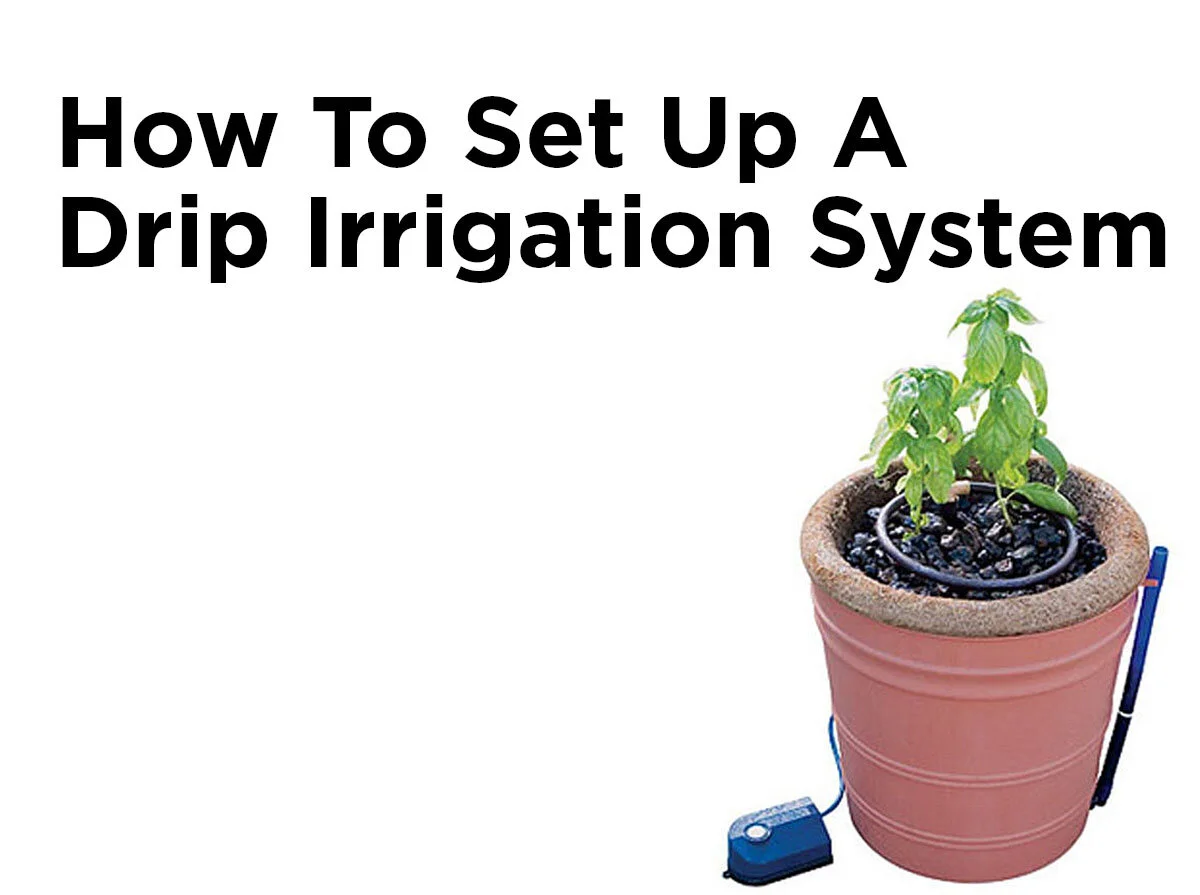How to Set Up a Drip Irrigation System
Let’s talk about drip systems. With so many hydro systems available, why should you pick a drip system over a nutrient film or ebb and flow system? Simplicity is one reason. A drip system is really simple to set up and has been used in outdoor gardens and larger irrigation systems for a long time while film and ebb and flow systems require more careful monitoring and can be tricky to set up properly. The second reason is water conservation. When you’re building a hydro system outside, the run-off water can be returned to the soil cycle instead of down the drain like with indoor setups. A drip system also carefully releases just enough nutrient solution to keep your plants healthy, so there isn’t any wasted water. Other hydro systems use a lot of constantly flowing water to prevent stagnation. With a drip system, you can even give specific amounts of nutrients to different types of plants on the same line. Let me show you how easy it really is to set up a drip system.
Gather Supplies
First, let’s go over what you need for a drip system. Every system needs a water source and distribution system. More complex drip lines will also use advanced automation controls. To break it down you need: A pump with a water basin, tubing, connectors, drippers, and a control system.
The pump and basin is just a submersible water pump in a large tub filled with water. This is where you’ll mix your nutrient solution to be dispersed to your plants. In the simplest construction – usually an outdoor garden – the tubing is just connected to a faucet with a valve. The pump and water tank system is best for indoor systems though.
Tubing and connectors make up the bulk of your drip system. For indoor gardens you’ll find vinyl tubing to be extremely useful since it’s the least likely to leak. If you want, you can use PVC or Polyethylene instead. Polyethylene is the most common while PVC is usually used in large systems. PVC tubing uses PVC connectors that need to be sealed properly with PVC cement. Poly and vinyl tubing both use simple barbed connectors which make installation relatively simple. I recommend using ½-inch vinyl tubing for a small indoor garden.
Drippers or emitters let you control just how much solution is delivered to each plant. You can forgo drippers simply by punching a small hole in your drip tubing, but if you’re planning on growing different kinds of plants a dripper will give you greater control on providing specific amounts of water and nutrients to individual plants.
The last thing to consider are controllers like timers, pressure regulators, and flow valves. In a simple system you can get by without these but they’re useful for larger or more complicated gardens. Timers will automate turning the pump on and off while pressure regulators and flow valves give you a finer control on the rate of water flow throughout the system.
Some Assembly Required
Now that you know what you need, let’s take a look at construction. The design is pretty simple. The water source connects to and supplies water to the tubing, which carries fluid to the drippers and hydrates your plants. It really is just that simple. Lay out you soilless grow medium into the pots and then run your drip tube to each pot. If you want to avoid using drippers, then just punch a very small hole (just enough to cause a drip) into the tube using a small needle and place the hole at the base of the plant. Run the tubing to your pump and drop it into the water reservoir. Turn the pump on and let it supply your plants with a steady drip of your pre-mixed nutrient solution. If you’re worried about forgetting to turn the pump on and off you can use a timer to regulate its operation. That’s it: just a series of plants and some tubing between.
Have any other questions or tips on setting up a drip system? Or just care to punch some holes in my line of reasoning? Then leave a comment below or contact us through Facebook, Twitter, LinkedIn, or Pinterest!










